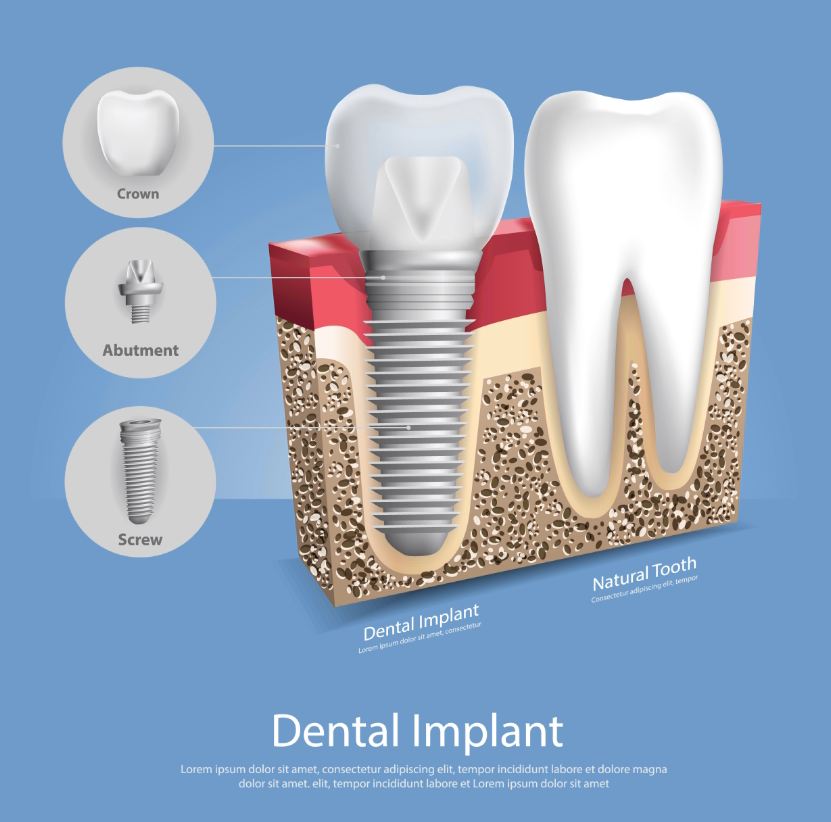Tooth pain or toothache originates from within a tooth or the surrounding gum and bone structures. One usually feels toothache pain as a constant or intermittent ache that does not go away. Odontalgia is another name for a toothache. It’s hard to ignore an aching tooth while eating or going about one’s day. Persistent pain urges us to find out how to get rid of a toothache. While bothersome, it is a way for the painful tooth or area to signal that one should seek some attention and care from a dentist before things get worse. Here are main causes and signs of tooth pain:
Tooth Pain Causes
Injury or trauma to the tooth or area usually cause toothaches. Injury is commonly a result of tooth decay (or cavity). People usually feel cavities when they get larger and deeper into the layers of tooth structure. Enamel is the hard, outer layer of tooth, and dentin is the softer layer beneath the enamel. Dentin is the tooth’s sensitive layer with tiny microscopic tubes that originate from the very center of the tooth. The pulp chamber (the center of the tooth) contains the pulp. The pulp is comprised of blood vessels and nerves. If decay gets past enamel into the dentin, the cavity can sometimes cause discomfort. A deeper cavity that approaches the center of the tooth will likely cause pain since there is more damage to the tooth and there is less tooth structure to insulate and protect the pulp. Localized infection between the gum and tooth (periodontal abscess) can cause toothache. A traumatic physical blow to a tooth can induce a sore tooth, as well.
Other causes of toothache include the following:
1.Abscessed tooth: This infection originates from within the tooth and spreads to the root and the surrounding bone.
2.Damaged or fractured tooth: Fracture of a tooth can expose the sensitive dentin or even the pulp. Sometimes fractures are not obvious even though the fracture line can run deep into the tooth, causing tooth pain every time one puts pressure on it with biting or chewing (called “cracked tooth syndrome”).
3.Dental work: After getting a filling or crown, the tooth can feel more sensitive. This is especially the case if the removal of tooth decay was large or deep. Dental work, although necessary, can sometimes irritate the nerve. Over time, the sensitivity can resolve if the tooth is healthy enough.
4.Teeth clenching or grinding: This habit is called bruxism and is oftentimes done unconsciously and at night. Unfortunately, bruxism causes damage to teeth and sometimes irritates the nerves to the point where teeth become sensitive.
5.Gum infection or gum disease: The periodontium consists of the gum, gum ligament, and bone that surround and anchor the teeth. Early stages of gum problems usually involve inflamed gum, called gingivitis. The gum is usually red, swollen and will bleed easily. A gum problem can progress to include the jawbone surrounding teeth and represents the later stages of gum disease (or “periodontitis”) where there is advanced loss of bone around the teeth. Because of bone loss, a gum abscess (infection) can form in the space that develops between the tooth and the gum, causing pain.
6.Exposed root surfaces: When the protective bone and gum no longer cover the roots of teeth, these surfaces can be sensitive to stimuli such as brushing the teeth or temperature changes.
7.Sinusitis: Because the roots of the upper molars are very close to the maxillary sinus cavities, inflammation from the sinus cavities can cause these molars to be sensitive and feel like a toothache.
8.Third molars (“wisdom teeth”): Third molars, also called wisdom teeth, are the very last permanent teeth to appear in the mouth. More often than not, there is not enough space for these molars in the mouth. As a result, third molars become fully or partially trapped (impacted) within the jawbone and below the gum. Because of poor accessibility, it is difficult to properly clean partially exposed third molars; therefore, these areas are susceptible to problems. Problems with third molars can cause dull to severe pain from pressure of eruption, gum infection, or dental decay.
Tooth Pain Symptoms And Signs
Signs and symptoms that can might indicate a tooth problem are:
- pain with biting or chewing
- teeth hypersensitivity to changes in temperature
- cheek or gums swelling near tooth
- discharge or bleeding of gums
- constant throbbing within a tooth
A toothache can present as a dull or sharp pain that may arise spontaneously on its own or by stimulation. Additional symptoms may include:
-
- headache
- neck pain
- earache
- fever
- bad taste or odor in the mouth.
In all cases of tooth or jaw pain or discomfort in and around the teeth and jaws, see your dentist as soon as possible for a proper evaluation and treatment. Your dentist may refer you to an endodontist for diagnosis and treatment, especially if the issue is related to a root canal problem. And if your pain has a medical component, your dentist or endodontist will refer you to a physician.
The dentist performs a series of diagnostic tests along with dental X-rays to determine the origin of your toothaches. These tests try to mimic what may be causing the pain, such as cold stimuli, biting or chewing pressure, and finger pressure on the gums. The response to a cold stimuli test can help in determining whether a tooth is vital (nerve is intact within tooth) or suffering from pulpitis (inflammation of the pulp). Determining duration and acuity of pain from cold stimuli can help diagnose and determine treatment.




